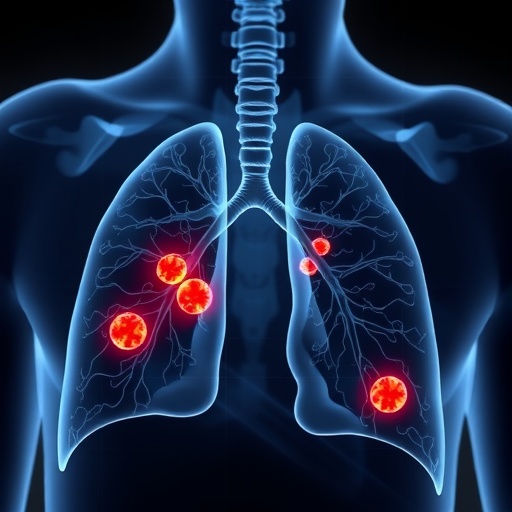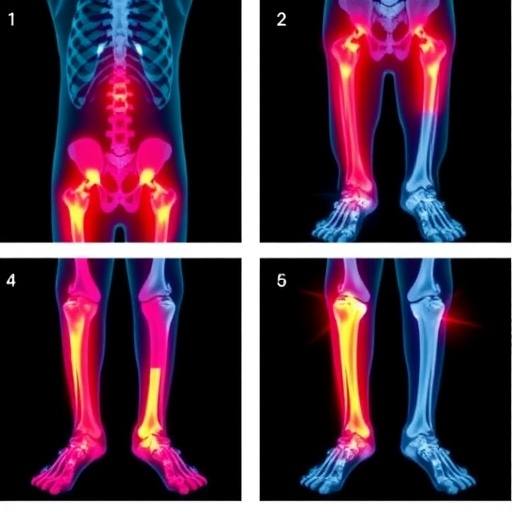
In a groundbreaking initiative poised to transform supportive care in pediatric oncology, the APACIS study embarks on a pioneering quest to unravel how varying intensities of exercise influence metabolic health in children undergoing cancer treatment. This early randomized intervention trial navigates the intricate interplay between physical activity and the metabolic derangements frequently encountered during childhood cancer therapies, promising to redefine clinical approaches and survivorship quality for this vulnerable population.
Metabolic complications, including insulin resistance and dyslipidemia, have long shadowed survivors of childhood cancers, manifesting as chronic health burdens in adulthood. Insulin sensitivity, in particular, represents a critical nexus in this pathological cascade, with impaired insulin signaling presaging the development of metabolic syndrome and cardiovascular disease. The APACIS study foregrounds this concern by targeting insulin sensitivity as its primary endpoint, recognizing the compelling need for early interventions that could mitigate long-term sequelae.
At its core, the APACIS protocol innovatively introduces exercise regimens immediately following diagnosis, a strategic departure from traditional approaches that often delay physical activity due to safety concerns during intensive cancer treatment. By randomizing pediatric participants across a spectrum of cancer diagnoses into two exercise intensity groups—one emphasizing low-intensity “Soft” activities and the other engaging in mixed high-intensity “Strong” workouts—the study meticulously evaluates the metabolic repercussions of early and tailored physical interventions over a six-month period.
The Low-Intensity “Soft” group comprises gentle physical activity designed to be feasible and tolerable even amidst treatment side effects, ensuring inclusivity regardless of each child’s fluctuating health status. Conversely, the “Strong” group challenges patients with a regimented mixed exercise routine, incorporating bursts of higher exertion aimed at eliciting more robust physiological adaptations. Both cohorts participate in biweekly sessions lasting between 30 to 60 minutes, fostering consistency while accommodating clinical realities.
Over an ambitious follow-up spanning 18 months, the study employs a rigorous assessment schedule at baseline, 3, 6, 12, and 24 months to track dynamic shifts in metabolic markers and physical fitness indices. Central to this evaluation is the Homeostasis Model Assessment of Insulin Resistance (HOMA-IR), a validated proxy of insulin sensitivity derived from fasting glucose and insulin measures. This quantitative approach enables nuanced monitoring of metabolic trajectories in response to personalized exercise stimuli.
Beyond HOMA-IR, APACIS extends its investigative reach to encompass lipid profiles, cortisol concentrations, nutritional status, and a suite of physical performance metrics. Cholesterol and triglyceride levels serve as lipidomic indicators, instrumental in uncovering the cardiometabolic implications of intervention. Cortisol, a biomarker of physiological stress, adds another dimension by elucidating how exercise intensity intersects with hormonal regulation during the taxing cancer treatment journey.
The comprehensive evaluation encapsulates cardiorespiratory fitness through the 6-Minute Walk Test peak oxygen uptake measurement, an accessible yet robust measure of aerobic capacity. Flexibility is gauged via the Sit and Reach test, while anthropometric assessments like Waist-to-Hip Ratio provide insights into fat distribution, a determinant of metabolic health. Patient-reported physical activity levels further contextualize adherence and lifestyle influences, ensuring a holistic analytic framework.
Innovatively, the APACIS protocol integrates advanced metabolomics analyses through a specialized pipeline capable of detecting 150 distinct metabolites. This high-dimensional biochemical profiling facilitates pathway enrichment analyses and metabolic network mapping, elucidating biochemical pathways perturbed by the synergy of cancer and exercise regimens. Such granular metabolic phenotyping promises to uncover mechanistic underpinnings that could guide precision intervention strategies.
The study’s scope also includes cutting-edge microbiota analyses, investigating the oral and intestinal flora subjected to oncologic treatments and modulated by exercise intensity. Dysbiosis and microbial shifts are increasingly recognized contributors to systemic metabolism and immune function, and their interrogation within this trial framework underscores the holistic approach of APACIS to childhood cancer care.
Crucially, the study’s early implementation of exercise interventions signals a paradigm shift, challenging previous hesitations surrounding physical activity initiation during active oncology treatment phases. This proactive stance aspires to harness exercise’s potential to buffer metabolic dysfunction and fortify physical resilience, thereby improving immediate treatment tolerability and long-term health outcomes.
The APACIS trial, registered under ClinicalTrials.gov identifier NCT05383092, signifies a vanguard in pediatric oncology rehabilitation science. By stratifying patients and meticulously quantifying biological and functional endpoints, it bridges a critical knowledge gap concerning optimal exercise prescription tailored to children’s unique physiological and treatment-induced vulnerabilities.
If successful, the findings could ignite a ripple effect across pediatric oncology protocols worldwide, endorsing exercise as a foundational adjunct therapy that transcends traditional supportive care boundaries. Such data-driven guidance would empower clinicians to personalize physical activity recommendations, adjusting intensity to balance efficacy with safety in diverse patient populations.
Moreover, this investigation dovetails with expanding scientific appreciation of exercise as a modulator of systemic metabolism, immune competence, and microbiome composition, all of which bear crucial significance in oncology outcomes. By embedding these analyses within pediatric contexts, APACIS both advances methodological innovation and addresses unmet clinical needs.
Ultimately, the APACIS study ventures beyond conventional metabolism-focused research, embracing an integrative vision that aligns molecular insights with practical rehabilitation strategies. This synergy could redefine survivorship trajectories, mitigating the metabolic toll of childhood cancers and enhancing quality of life through targeted physical engagement.
As the field eagerly anticipates results, the trial underscores the importance of interdisciplinary collaboration among oncologists, exercise physiologists, nutritionists, and molecular biologists. Such a concerted effort ensures that outcomes will not only yield statistical significance but translate into meaningful, actionable recommendations for real-world clinical settings.
In sum, the APACIS study embodies a transformative stride in pediatric cancer care, illuminating the promise of early and tailored exercise interventions to recalibrate the metabolic disruptions wrought by daunting therapies. Its multidimensional approach weaves together physiology, biochemistry, microbiology, and clinical pragmatism—an exemplar of precision medicine applied within the earliest and most critical stages of childhood cancer treatment.
Subject of Research: Investigation of metabolic effects of two levels of exercise intensity on children undergoing cancer treatment, focusing on insulin sensitivity, metabolic profiles, physical fitness, and microbiota.
Article Title: Study protocol of an early randomized intervention trial assessing the metabolic effects of two levels of exercise intensity in children undergoing cancer treatment: the APACIS study
Article References: Thomas, J., Filleron, T., Auriol, F. et al. Study protocol of an early randomized intervention trial assessing the metabolic effects of two levels of exercise intensity in children undergoing cancer treatment: the APACIS study. BMC Cancer 25, 850 (2025). https://doi.org/10.1186/s12885-025-14235-4
Image Credits: Scienmag.com
DOI: https://doi.org/10.1186/s12885-025-14235-4
Tags: APACIS study on exercise and cancerchildhood cancer metabolismchronic health burdens in cancer survivorsearly exercise post-cancer diagnosisexercise intensity effects on cancer treatmentinsulin sensitivity in cancer survivorslong-term health outcomes in childhood cancermetabolic health in children with cancerpediatric oncology exercise interventionsphysical activity and insulin resistanceredefining cancer treatment protocolssupportive care in pediatric cancer





